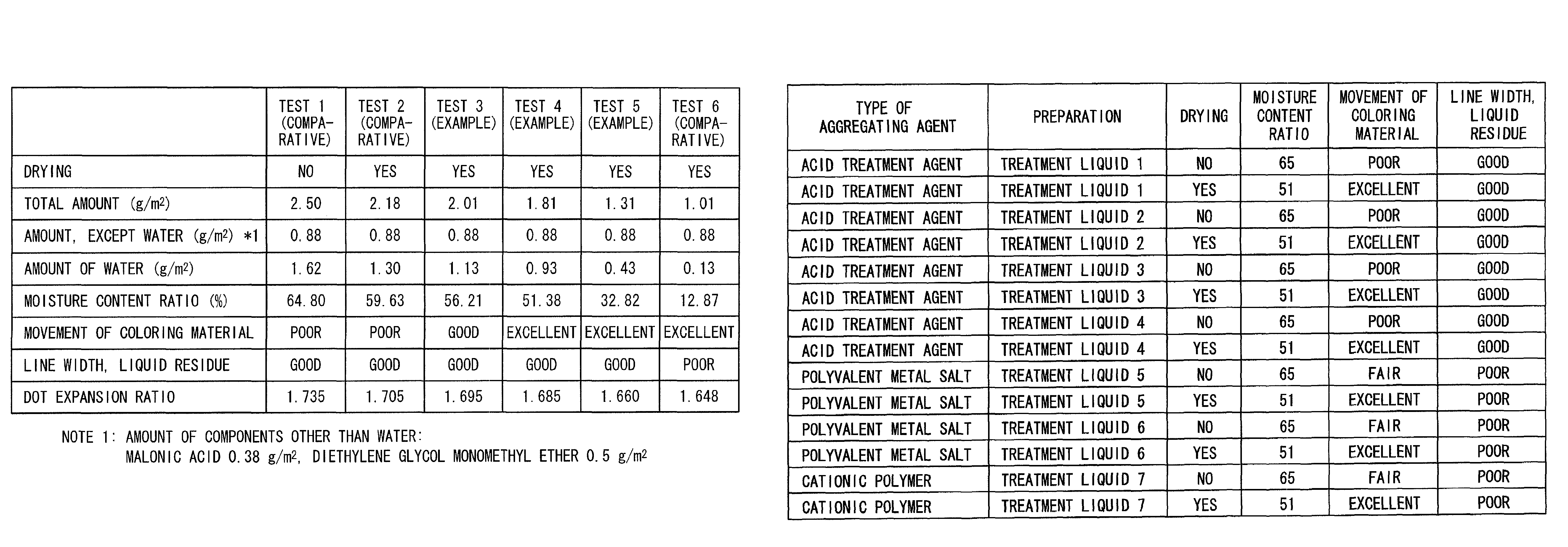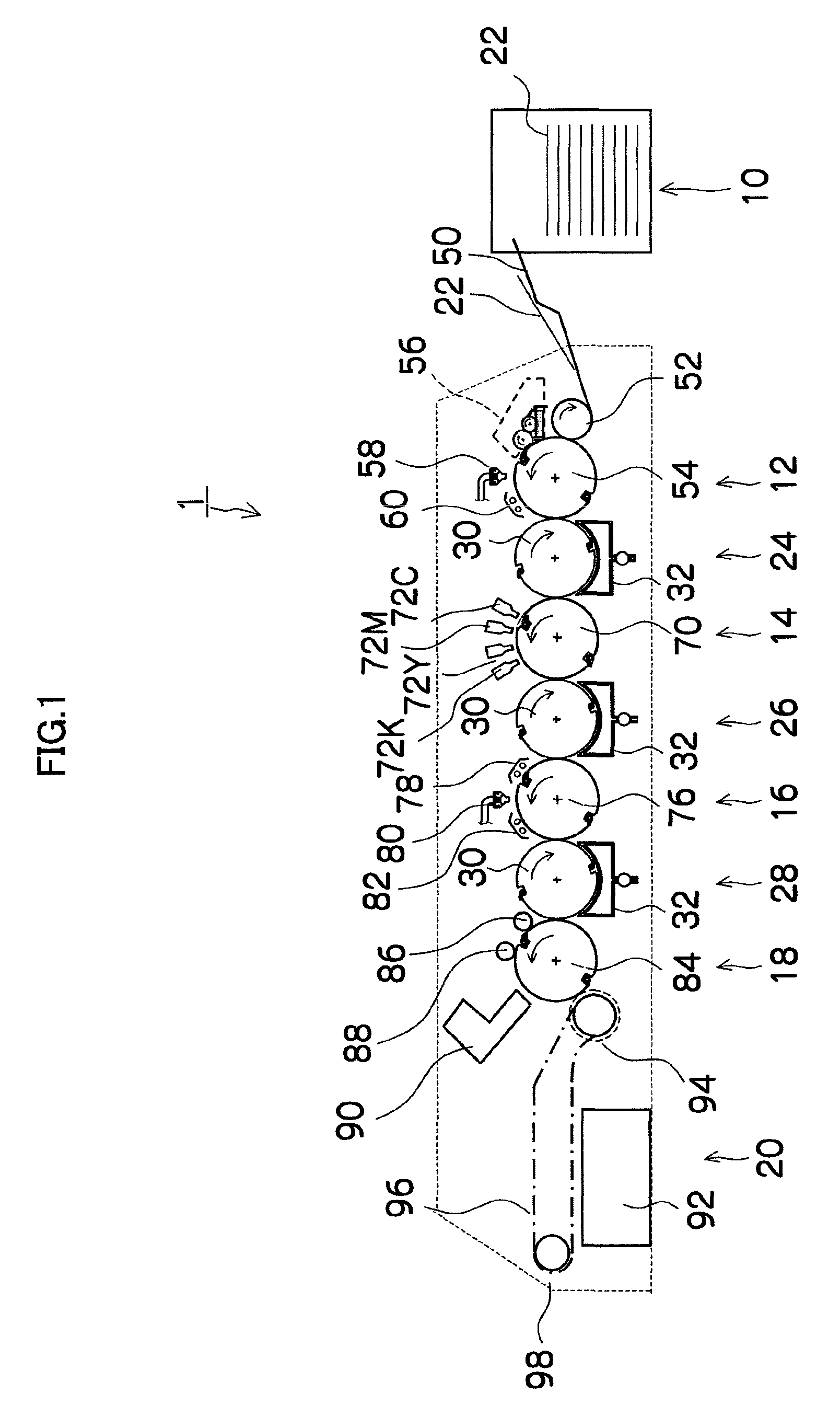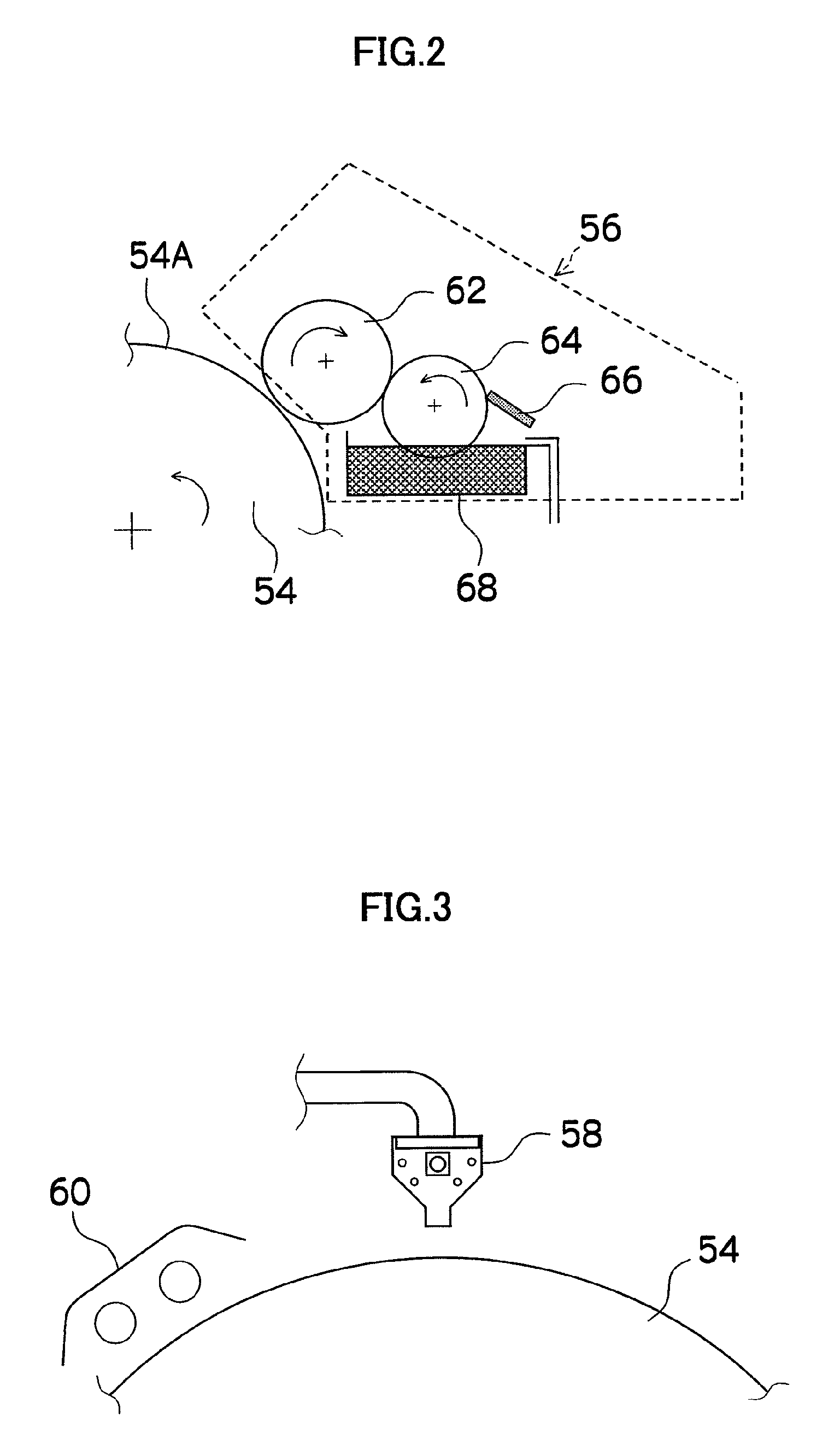Image forming method and apparatus
a technology of image forming and forming method, which is applied in the direction of inking apparatus, coatings, inks, etc., can solve the problems of difficult high-speed printing, inability to form dots of desired shape and size, and interference with the land, so as to achieve accurate patterned lines, short drying time, and high-quality image formation
- Summary
- Abstract
- Description
- Claims
- Application Information
AI Technical Summary
Benefits of technology
Problems solved by technology
Method used
Image
Examples
first embodiment
[0124]In the first embodiment of the image forming apparatus in accordance with the present invention, an image is directly formed by a two-liquid aggregation method on a recording medium transported by a drum. In this embodiment of the present invention, the explanation will be conduced with respect to a typical inkjet recording apparatus as an image forming apparatus.
[0125]FIG. 1 is a structural diagram illustrating the entire configuration of an inkjet recording apparatus 1 of the present embodiment. The inkjet recording apparatus 1 shown in the drawing is a device that forms an image on a recording surface of a recording medium 22. The device includes a paper feed unit 10, a treatment liquid application unit 12, an image formation unit 14, a drying unit 16, a fixing unit 18, and a discharge unit 20 as the main components. A recording medium 22 (paper sheets) is stacked in the paper feed unit 10, and the recording medium 22 is fed from the paper feed unit 10 to the treatment liqu...
second embodiment
[0432]In the second embodiment of the image forming apparatus in accordance with the present invention, an intermediate transfer system is employed in which an image is temporarily formed by a two-liquid aggregation method on an intermediate transfer body and this image is then transferred onto a recording medium.
[0433]FIG. 15 is a schematic structural diagram of the inkjet recording apparatus of the second embodiment. An inkjet recording apparatus 200 shown in FIG. 15 employs a two-liquid aggregation system and an intermediate transfer recording system. In this inkjet recording apparatus, an ink image composed of ink aggregates (coloring material aggregates) is formed on an intermediate transfer body 202 by using an ink and an aggregation treatment agent, and the ink image formed on the intermediate transfer body 202 is transferred onto a recording medium 204.
[0434]As shown in FIG. 15, the inkjet recording apparatus 200 of the second embodiment mainly includes an aggregation treatm...
third embodiment
[0486]The third embodiment of the image forming apparatus in accordance with the present invention has a configuration such that in an intermediate transfer system in which an image is temporarily formed by a two-liquid aggregation method on an intermediate transfer body and the image is then transferred onto a recording medium, one treatment liquid including a component causing the coloring material of the ink to aggregate and substantially colorless microparticles is applied to the intermediate transfer body.
[0487]The substantially colorless microparticles used in accordance with the present invention may be any microparticles, provided that they are substantially colorless. The expression “substantially colorless” as used herein refers to a state in which when the microparticles in accordance with the present invention are applied at 0.1 g / m2, the light absorption density in a visible range is not more than 0.1.
[0488]Specific examples of substantially colorless microparticles inc...
PUM
| Property | Measurement | Unit |
|---|---|---|
| mean particle size | aaaaa | aaaaa |
| particle size | aaaaa | aaaaa |
| thickness | aaaaa | aaaaa |
Abstract
Description
Claims
Application Information
 Login to View More
Login to View More - R&D
- Intellectual Property
- Life Sciences
- Materials
- Tech Scout
- Unparalleled Data Quality
- Higher Quality Content
- 60% Fewer Hallucinations
Browse by: Latest US Patents, China's latest patents, Technical Efficacy Thesaurus, Application Domain, Technology Topic, Popular Technical Reports.
© 2025 PatSnap. All rights reserved.Legal|Privacy policy|Modern Slavery Act Transparency Statement|Sitemap|About US| Contact US: help@patsnap.com



